When is an Aussiedoodle Full Grown? (Pictures)
Everyone knows how popular “Doodle” designer breeds are, and the Aussiedoodle is becoming more in demand daily. I’m a big fan of this mixed breed dog for its look and temperament.
But before you choose a puppy, you should know everything about the breed (or, in this case, mixed-breed) in which it comes. One central question is how long it may take to see your Aussiedoodle full grown. Well, that is what I will discuss here.

You will likely see your Aussiedoodle full grown by the time it is 2 years old. If you have an Aussiedoodle puppy, you’ll see it grow extremely fast from when you adopted it to the age of 10 months.
Between birth and one year old, this designer breed does most of its growth.
Aussiedoodle Size
If you already have an Aussiedoodle puppy, you’re probably here because of how quickly your new pet grows. Maybe you’re wondering whether your dog will get bigger than you anticipated.
If you’re worried about this, there’s no need. The Aussiedoodle is a bit unique in its growth patterns. It’ll grow surprisingly fast between birth and ten months old, achieving most of its growth by the time it’s one year old.
But then it’ll only grow a little bit in its second year, becoming an adult when it turns two.
The adult size of your Aussiedoodle depends on what variety you have. There are different size varieties in the Aussiedoodle designer breed.
The largest is the Standard Aussiedoodle. The Miniature Aussiedoodle is smaller, while the Toy Aussiedoodle is the tiniest variety of the Aussiedoodle.
Standard Aussiedoodle
As I mentioned, the Standard Aussiedoodle is the largest type in this designer breed. If you have a Standard Aussiedoodle, you can expect it to weigh anywhere from 45 to 70 pounds when it’s an adult.
The Standard Aussiedoodle’s height at the shoulder is usually more than 15 inches. If you want to get this breed of dog, ensure you can give them enough outdoor space for play and exercise.
While you shouldn’t consider an Aussiedoodle to be an adult until it’s two years old, a Standard Aussiedoodle may be almost completely full-grown (in size) when it’s one year to 16 months old.
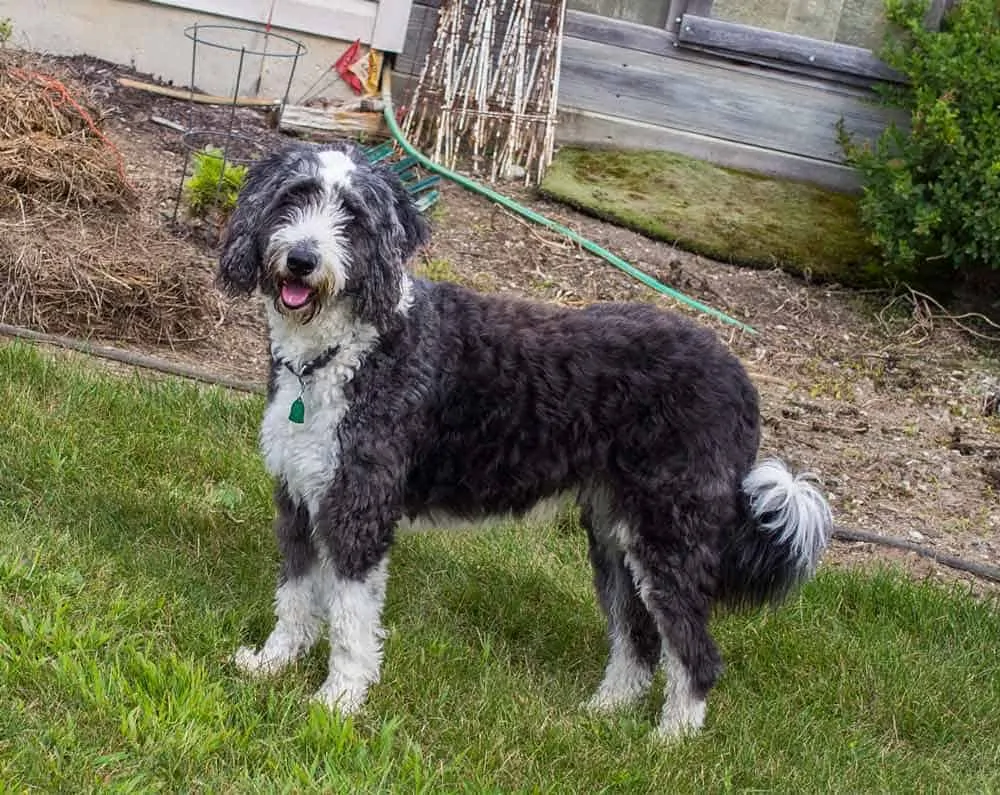
Miniature Aussiedoodle
There’s a surprising amount of variety in heights and weights for Miniature Aussiedoodles. The average height at the shoulder of this dog ranges from 10 to 15 inches, and the average adult weight tends to range from 15 to 45 pounds.
Most Miniature Aussiedoodles will get as big as they’ll ever be when they’re around 11 to 13 months old.
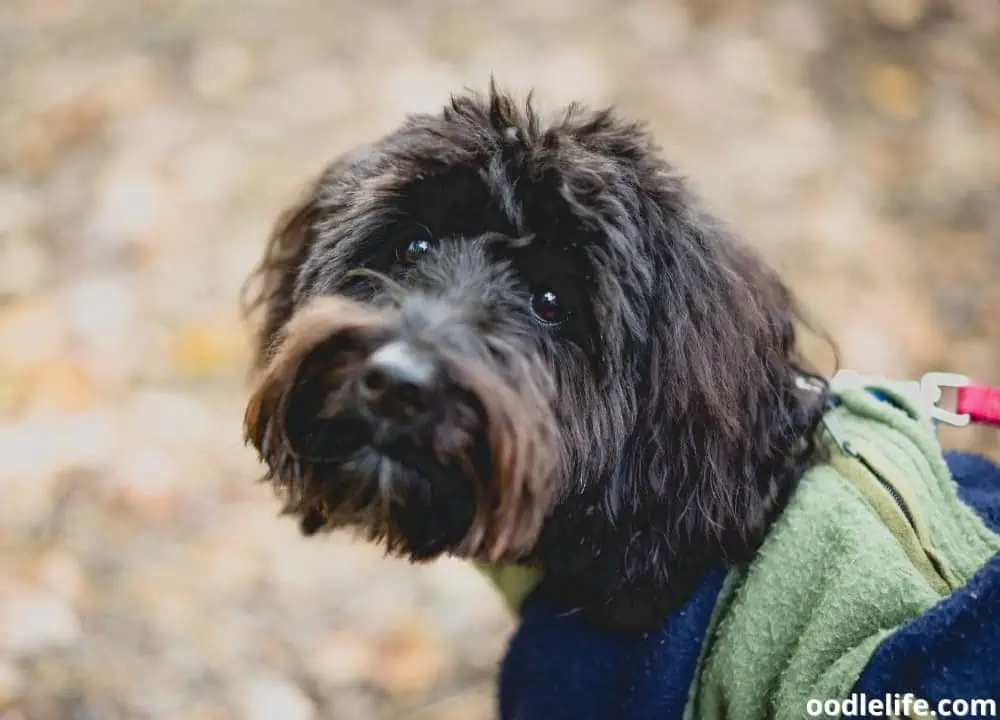
Toy Aussiedoodle
Breeders cross Toy Poodles with Australian Shepherds to achieve the Toy Aussiedoodle. As you can guess from the name, this is the tiniest Aussiedoodle available. The Toy Aussiedoodle’s height at the shoulder tends to be around 10 inches.
You get a sense of how tiny this toy dog is when you know its weight. An adult Toy Aussiedoodle weighs only between 10 and 15 pounds. As the smallest Aussiedoodle, the Toy Aussiedoodle reaches its adult size earlier than the other varieties.
A Toy Aussiedoodle may be as large as it will be as early as seven months old, and some will take until 11 months to become their adult size.
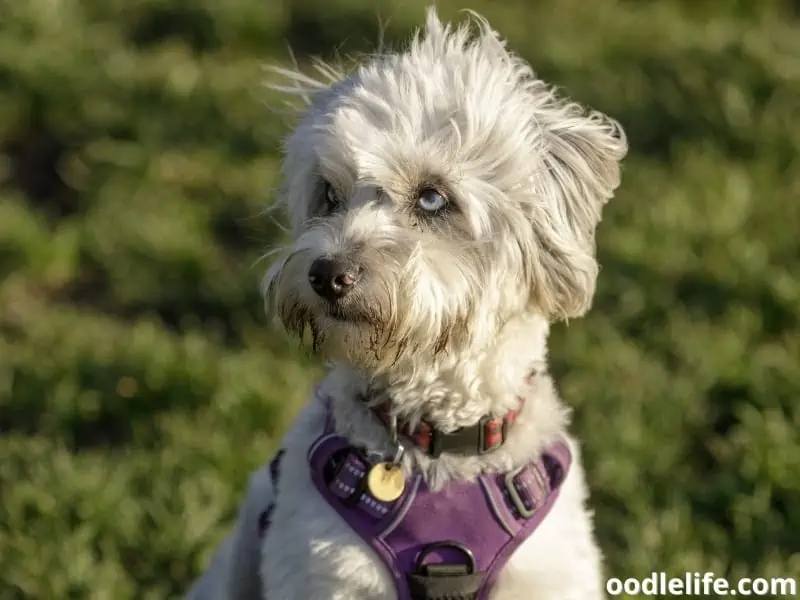
How To Choose an Aussiedoodle Variety?
As there are three size varieties, it’s easier to find one that suits your lifestyle. One of the most important considerations when getting a dog is how much space you have, including outdoor space.
You shouldn’t get a Standard Aussiedoodle if you don’t have outdoor space and plenty of time to exercise and play outside with your dog. Miniature and Toy Poodles still need exercise and outdoor time, but not as much.
If you live in a small space without outdoor space, such as an apartment, stick to the Toy Aussiedoodle. As a toy dog, this canine companion is meant to spend a lot of time on your lap. You can easily pick it up and carry it around, too.
When looking for a puppy, you should ask prospective breeders to show you the breeding stock (the puppy’s parents). For obvious reasons, the size of the canine mother and father will significantly impact how large your puppy will be as an adult. Knowing the dog’s potential size can help determine whether or not you have adequate space at your residence.
Another advantage of seeing the parents is getting a sense of their temperaments. After all, temperament has a vital genetic component in dogs. You must also ensure they don’t have any health problems they could pass down to their puppies.
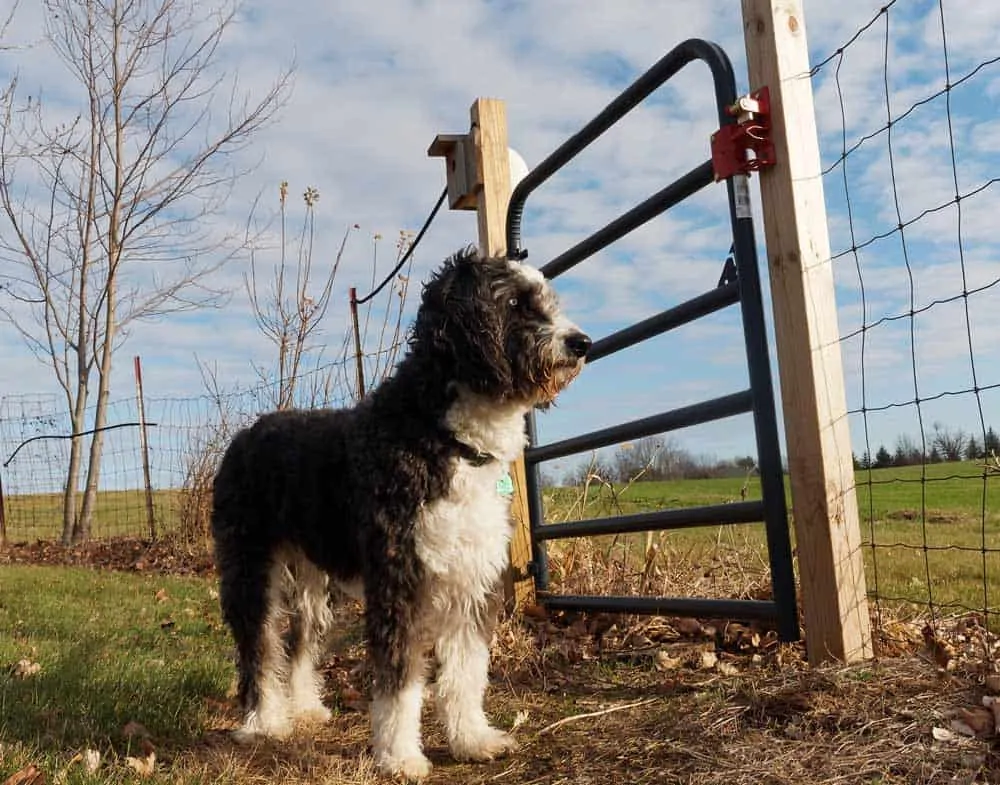
Should You Get an Aussiedoodle?
Like any other type of dog, whether you should adopt an Aussiedoodle puppy depends on various factors such as:
- Personal needs
- Preferences
- Lifestyle
- Time availability
Something to remember with Aussiedoodles is that you’ll have to be especially attentive with training. This dog is affectionate, but it can also be mischievous. And that is tied to its intelligence.
Without enough mental stimulation and interaction, an Aussiedoodle will get into trouble.
You need plenty of time for training and playing with your dog if you want an Aussiedoodle. This weighty time requirement is likely more than what you would need with many other breeds of dogs. If you have a hectic schedule and are away from the house often, the Aussiedoodle isn’t the right dog for you.
You should devote at least four hours daily to spending time with your Aussiedoodle.
However, if you’re interested in bringing your new dog to participate in obedience classes, the Aussiedoodle is an excellent choice. You already know about the Poodle’s intelligence, but did you know that Aussiedoodles can be even more clever? That’s certainly the case when it comes to training and obedience courses.
Dog trainers have found that this cross-breed does exceptionally well, so schedule a class with your new dog and begin training!
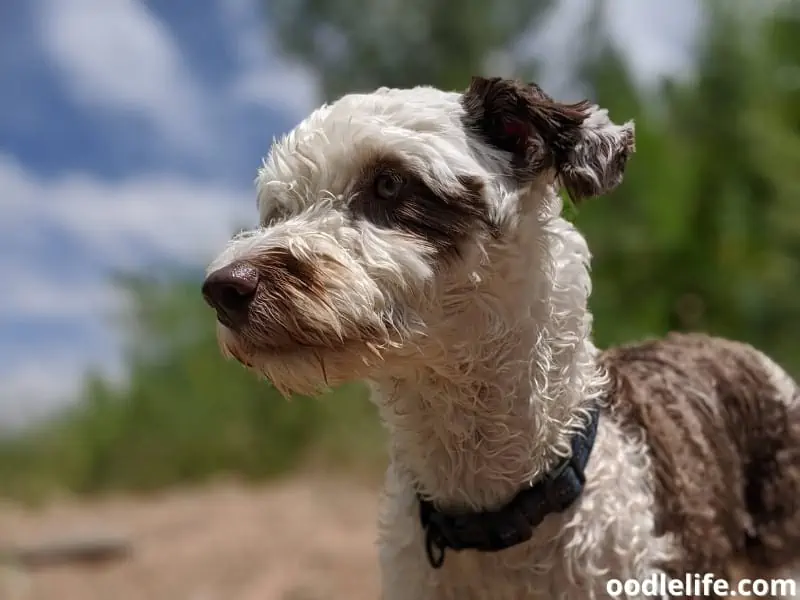
Related Frequently Asked Questions (FAQs)
Now you know when to expect to see your Aussiedoodle full grown, you probably have some other questions about this mixed-breed canine. I’ll list and answer some frequently asked Aussiedodle questions below.
Do Aussiedoodles shed?
Every dog sheds to some extent, but Aussiedoodles shed a lot less than many other dogs. Certainly, an Aussiedoodle is a much milder shedder than the purebred Australian Shepherds in its heritage. That’s because of the Poodle’s contribution to its genetics.
If you’re familiar with Poodles, you know that they shed very little. That is why so many people with allergies choose to purchase Poodles. Poodles grow hair rather than fur.
The difference between hair and fur is that hair has a longer growth cycle.
In other words, hairs don’t fall out as much as fur. Of course, each Aussiedoodle is unique. Some take more after their Australian Shepherd heritage, while others inherit more from the Poodle.
If you have an Aussiedoodle that takes more after the Poodles in its lineage, it will probably shed very little. However, if it takes more after the Australian Shepherd, it will probably shed a little bit more (but still much less than an Australian Shepherd).

What is the temperament of an Aussiedoodle?
An Aussiedoodle combines the features of an Australian Shepherd and a Poodle. As mixed breed dogs, Aussiedoodle puppies vary in terms of how much they inherit from each side of their heritage.
The Aussiedoodle has a double dose of intelligence from the Poodle and Australian Shepherd. That is one reason you need to give your new puppy a lot of mental stimulation, and you should be incredibly attentive with training.
This dog also has the playfulness and eagerness to interact that we see in Australian Shepherds. Remember, the Australian Shepherd is a working and herding dog. This means it likes to have a job to do and will look for ways to help you.
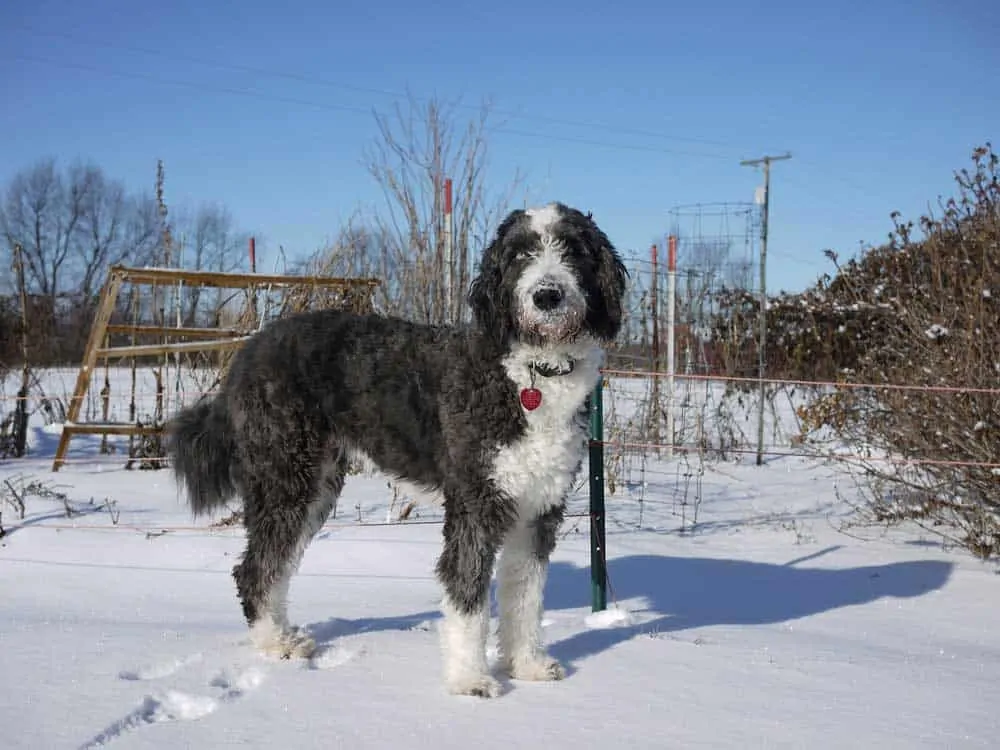
Do Aussiedoodles have health problems?
There’s always a chance of a dog having a health problem during its life. As an Aussiedoodle is a mixed breed, you’ll have to consider conditions common in the Poodle and Australian Shepherd breeds.
Always do ample research on breeders before you choose one. Unfortunately, there are many disreputable and unethical operations out there. You should avoid such breeders because they may mistreat their dogs and inbreed them, leading to serious health problems and suffering.
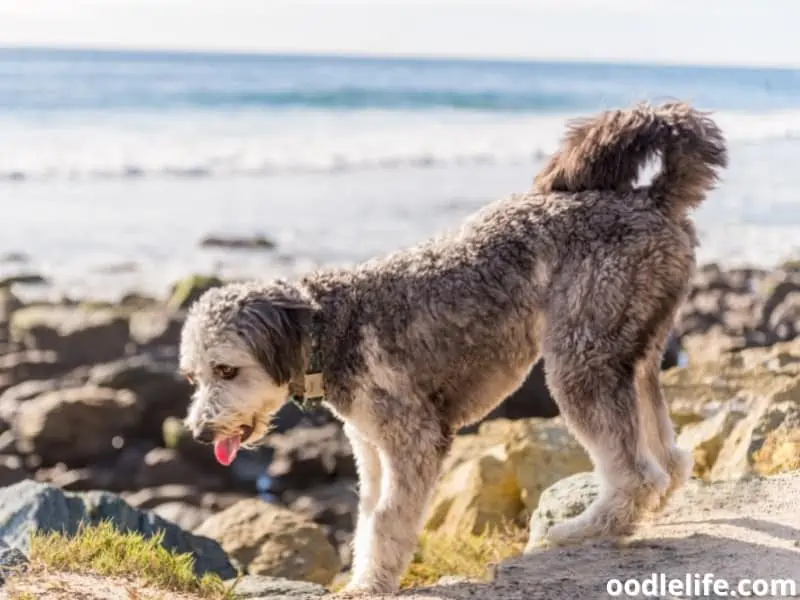
What coat colors does the Aussiedoodle have?
There are several different Aussiedoodle coat varieties. As this is a mixed breed dog, it can be difficult for breeders to predict exactly which coat colors will appear in a litter. However, they can certainly get a good idea of what will happen by looking at the parent dogs (the mother and father).
Let’s take a look at just a few of the coat varieties we see in Aussiedoodles:
Teddy Color
An Aussiedoodle with a teddy color usually has a black-based coat with tan and white. It gets its “teddy bear” name from how there’s some tan or white around the neck, creating the look of a color.
Red Tuxedo Aussiedoodle
If your Aussiedoodle has a “Red Tuxedo” coat, it will have a red-based coat with a chocolate look and white patches on the chest and neck area. This is what creates the tuxedo look.
Black Tuxedo Aussiedoodle
The Black Tuxedo coat on an Aussiedoodle includes a black-based coat and white patches. It’s pretty easy to guess this from the “tuxedo” name.
Final Thoughts
So, now you know when to expect to see your Aussiedoodle full grown! These dogs tend to do most of their growing during their first ten months of life, but they’re not considered full-grown until they’re two years old.